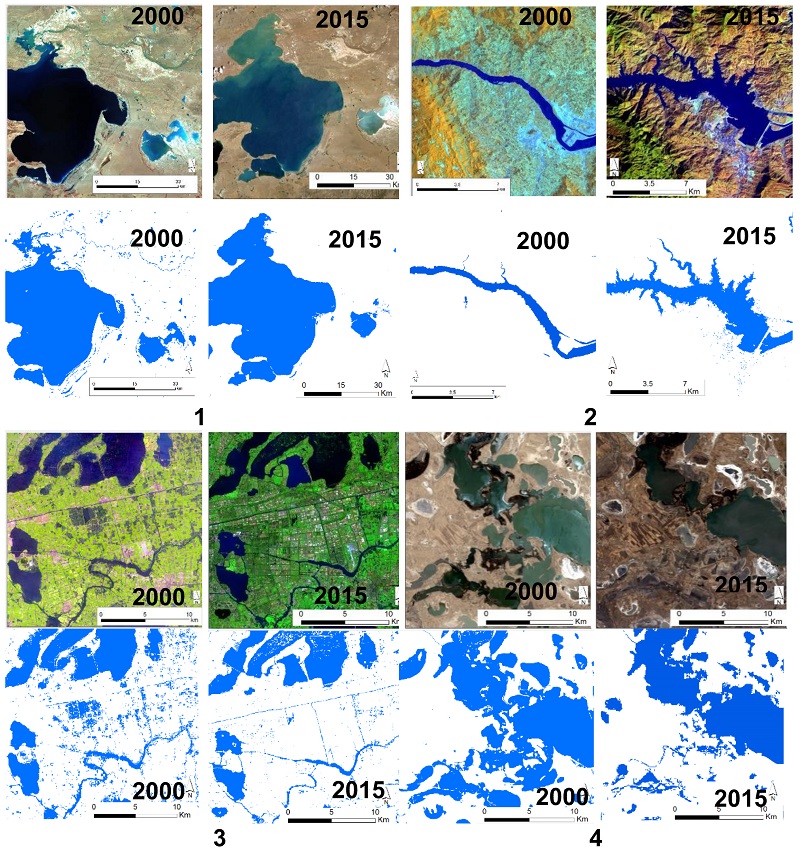The fifth subject "ecosystem change and ecological security pattern" under biodiversity and ecological security information platform project has made new progress in the research of wetland ecosystem patterns and protection in China. The researchers analyzed the current status and changes in wetland of China. It studied the shortage of "zero net loss" as a wetland protection goal, and proposed suggestions for wetland protection and restoration in China The relevant research results were published in “Current biology”, a famous international journal in the field of biology and ecology. The research was conducted by Professor Xu Weihua Research Center for Eco-Environmental Sciences, Chinese Academy of Sciencesis as the first author of the paper, and Professor Ouyang Zhiyun as the corresponding author.
Wetland ecosystem has important ecosystem services such as water conservation and climate regulation, which is of great significance in the global biodiversity protection, but it is under threat due to reducing area. At present, wetland protection has become a key indicator of the sustainable development goals of the United Nations. In order to curb the trend of wetland loss, many countries, including the United States, regard "no net loss"or "no decrease of total area" as an important goal of wetland protection.
The study developed an ecosystem classification dataset with a resolution of 30 meters for China using the data from this project, along with remote sensing data interpretation and ground survey,. It includess 8 first-class ecosystem types such as forest, shrub, grassland, wetland and desert, and 22 second-class ecosystem types. Thei analyzed the changes in trend and main driving factors of wetland ecosystems in China from 2000 to 2015, and studied the suitability of "no reduction of total area" as the wetland protection goal.
The study found that from 2000 to 2015, 27600 square kilometers of wetlands were added in the mainland of China, mainly distributed in the northwest, the Qinghai Tibet Plateau and the southwest. Meanwhile, 26100 square kilometers of wetlands were lost, mainly distributed in the northeast, the North China Plain, the middle and lower reaches of the Yangtze River, and the eastern coastal areas. The new gain area is larger than the lost area, thus the total area has increased by 1500 square kilometers, and the trend of wetland loss in China has been stopped.

Figure 1 Wetland changes in parts of the country from 2000 to 2015
Qinghai-Tibet Plateau; 2. Three Gorges; 3. Yangtze River Delta; 4. Songliao Plain)
The paper points out that the increase of net area can not reflect the complexity of wetland change. First of all, in terms of the types of changes, although the open water surface of lakes and reservoirs has increased, the natural wetlands such as swamps and tidal flats have decreased by 7600 square kilometers. Secondly, from the perspective of the main driving factors of wetland change, wetland change is the result of the comprehensive impact of various natural and social factors, such as ecological protection, food security, climate change, etc.The increase of wetland area caused by ecological protection and restoration projects, such as Gain to Lake, natural reserve establishment, cannot offset the wetland loss caused by farmland and urban expansion. In Qinghai Tibet Plateau Region, the increase of temperature caused the retreat of glaciers and permanent snow all year round and the expansion of rivers and lakes in the short term, but this increase is unsustainable and the wetland area may decrease in the long term. Finally, the current wetland change pattern may have great ecological risks. The loss of wetlands in the northeast and eastern coastal areas of China may affect the migration safety of migratory birds in East Asia and Australia.The dam construction may increase the water surface, submerge the habitat of the original rare and endangered species, and cut off the migration channels of aquatic animals such as fish, thus threatening their long-term survival.
The paper pointed out that it is not sufficient to use"no net loss" as the goal of wetland protection. In addition to the area, wetland type, quality and function should be taken as an important part of the goal of wetland protection as a whole, and puts forward a framework for effective research and protection of wetlands. Besides, in view of the problems faced by wetland protection in China, the authors proposed some measures to ensure the protection and restoration of the wetland ecosystem, such as red lines for important natural wetlands, strengthening the protection and restoration of wetland functions, strengthening the management of water resources to ensure the ecological water demand, and avoiding the construction of dams in the important biodiversity areasto ensure the protection and restoration of wetland ecosystems.

